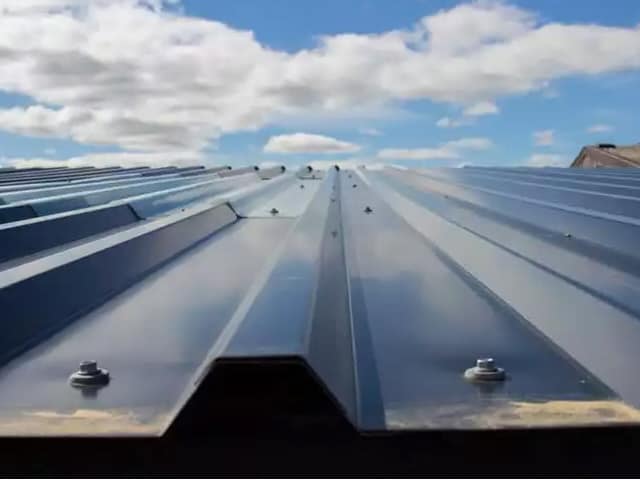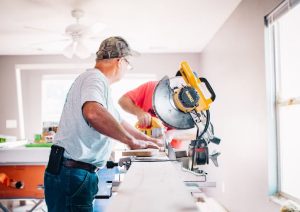if you’re looking for ways to prevent metal roof panels from getting condensed. Well, say no more, here’s a guide for you to know what exactly you have to do and what you have to avoid.
What is condensation?
If you ever look out of your window/ or go out really early in the morning, before sunrise you must have noticed dew drops on your windows or on the car windscreen. Or even on flowers. That is condensation.
Condensation takes place when the ratio of water vapors (in a gaseous state) over power the air particles. When those water vapors cool down to a point where the molecules change into a liquid form.
If the air in which the gaseous form of water vapors was warm then it wouldn’t turn into dew drops or in simpler words, it wouldn’t turn into liquid.
But as soon as the air turns cold the gaseous form turns to liquid and that when you see it on your windows etc. But that isn’t something to stress about because there’s a simple and easy solution to that.

What causes condensation on metal panels?
The interior of your house may sustain water damage if temperature and humidity levels hit dew point, which can cause moisture to condense on the bottom of metal roofing.
When warm air hits the cooler roofline or walls, it can result in surface moisture and drips from ceilings. The use of the building, the heating and cooling systems, gas-fired heating components, poor building techniques, or even human respiration can all result in high interior humidity, a main cause of condensation in metal buildings.
Effects of condensation on different panels
You need to understand that water droplets will form if there is a lot of condensation, and they may cause harm. That’s why few potential effects of moisture buildup in wall and roofing systems in metal buildings are discussed. So that you are aware of them.
Firstly metal component corrosion, even on surface-treated metal Metal parts that are exposed to moisture run the risk of oxidizing and weakening, shortening the lifespan of your house structure. Secondly, degradation or diminished efficiency of insulation’s thermal performance and growing mold or mildew can produce bad smells and pose health hazards, especially for people who have allergies or asthma. Lastly large groups of insects can be collected in it.

The Solution of Controlling Condensation!
Note that in the past, condensation has been controlled by insulating the metal roof to keep the temperature of the panels below the dew point. To do this, fiberglass insulation with a vinyl backing is frequently used.
This keeps humid air from coming into touch with the metal roof’s cooler surface (which may be at or below the dew point). Insulation is definitely something to think about if you heat or cool your house/building. If not, there is an alternative to installing vinyl-backed insulation that you should think about.
If you want to stop moisture-related damage, you might think about installing Drip Stop, a proprietary condensation control membrane. A felt-like material with a rubber backing called Drip Stop, that can be put on the back of metal panels. by doing that condensation-related moisture is practically trapped and held in place by the cloth.
And let’s just say that if conditions change, the temperature of the surrounding air typically increases, which also raises the dew point. After that, the Drip Stop material releases the moisture back into the atmosphere as typical humidity. Metal coils can have Drip Stop put to the back of them before being roll-formed into panels.
Alternative Solutions You Can Follow On You Own
Here are some alternative condensation control methods you can use in your daily lives.
1. Open your windows when weather outside is a little warm

The room that is most frequently used, such as a living room or your bedroom. When it’s not too chilly outdoors, you can maximize the ventilation in the room by slightly opening a window. As one of the primary causes of condensation, breathing, this will aid your property’s ventilation.
2. Wipe Down Cold Surfaces

If your bathroom or kitchen lacks an exhaust fan, be sure to wipe down any cold surfaces after cooking or taking a shower to remove any possible moisture that may have formed on the surface. If left untreated, the extra moisture in the air that collects on the surface will soon transform to mold.
3. Don’t Overfill Your Cupboards

Avoid over-stuffing your kitchen cabinets and wardrobes from being overstuffed. Because that can lead to lack of circulation and moisture in the air that is trapped in warm, overstuffed cabinets can provide an ideal environment for the growth of mold. A moldy foul smell or the feeling that your clothing are damp are sure signs that the closet is overstuffed.
4. Make Sure Your Property Has Good Heating System

Making sure your home has enough heating will enhance the indoor temperatures of the surfaces and minimize the risk of condensation. Additionally, to ensure that heat doesn’t escape from the house, make sure your home has double-glazed windows and insulated walls.
5. Install Double Glazing, Loft and Wall Insulation

The heat that is lost from a property can be controlled with the help of double glazing, loft insulation, and leak proofing. By adding insulation, you can increase the efficiency of your home’s energy use and lower your heating costs while maintaining a greater temperature on the surfaces inside your building.
6. Cover Up Fish Tanks or move plants

Many families have their pets inside or moist-producing plants. Be careful to cover your fish tanks since they produce extra moisture from evaporating into the atmosphere. Probably move your indoor plants outside if moist patches on your walls or increased surface condensation on your windows and walls close to them start to form.
7. Avoid Using Portable Gas & Paraffin Heaters

You need to realize that both portable gas heaters and paraffin heaters generate a lot of harmful fumes and moisture. We usually take that non seriously but this type of heat is not only a risk to your health but is also very dangerous and leads to additional condensation in your home. This is exactly why most rental contracts specifically say that it is not authorized in rental apartments.
8. Use Pan Lids When Cooking or Exhaust Fans

When cooking, cover your pots with a lid to prevent the moisture that was created by the boiling water from leaving and mix with the air. Secondly, make sure you are utilizing an exhaust fan or hood if you’ve got one installed beforehand.
The exhaust fans are intended to help reduce moisture produced during cooking. Another thing you need to keep in mind is that even after you have finished cooking, moisture may still be present in the air. Don’t think it will be instantly gone after cooking.
Instead of turning off your exhaust fan right away, leave it running for 10 to 15 minutes to assist the air become less humid. Another choice is to buy an exhaust fan equipped with advanced humidity sensors that can speed up when the water is about to boil and slow down when the humidity has returned to normal. This way it will help you prevent condensation.
9. Keep your Kitchen & Bathroom Doors Closed

The main culprits for forming condensation on windows throughout your house are the kitchen and bathroom.
You need to make sure your kitchen or bathroom door is closed when cooking or when you are boiling the kettle, or taking a bath or shower to avoid moisture in the air from entering cooler rooms, where it will cause moisture to form if it hits a cold surface.
10. Dry Clothes Outdoors

When necessary, try to dry your items outside to avoid having too much moisture accumulate inside your home. Hang your garments in a bathroom with the door closed and the windows open until they are completely dry if you are unable to dry them outside.
Conclusion
In conclusion the best way you can prevent metal roof panels from getting condensed is by following those little alternative steps yourself. Just like how they say every penny matters because without a penny there wouldn’t be a pound. Just like that if you start doing at least two or three of these things it will make a great difference.



